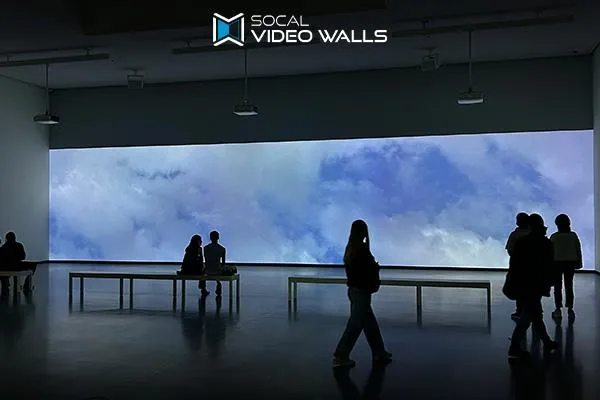
Choosing the Right Pixel Pitch | LED Video Wall Guide for Business Owners
When it comes to LED video walls, one of the most important—but often overlooked—decisions is pixel pitch. For business owners exploring permanent video display solutions, understanding this simple measurement can mean the difference between a jaw-dropping visual and a disappointing investment.
At SoCal Video Walls, we design and install LED video wall systems that are custom-tailored to your space, goals, and audience. And that always starts with choosing the right pixel pitch for your needs.
🧮 What Is Pixel Pitch?
Pixel pitch refers to the distance (in millimeters) between the centers of two adjacent pixels on an LED screen. It’s typically denoted as P1.2, P2.5, etc., where the number indicates the millimeter spacing.
Smaller pixel pitch = higher pixel density = better image clarity (especially up close)
Larger pixel pitch = lower pixel density = better for long-distance viewing
Think of it like resolution—the closer your viewers will be to the screen, the tighter your pixel pitch needs to be to avoid a grainy or blocky image.
🏢 Why It Matters for Businesses
Selecting the right pixel pitch isn’t just a technical choice—it directly affects your:
Viewer experience
Budget
Installation scope
Content effectiveness
A video wall in a conference room, for example, has completely different viewing needs than a 20-foot outdoor LED billboard. That’s why our team always starts with use-case analysis before recommending the ideal specs.
🔍 Typical Use Cases & Recommended Pixel Pitches
Here’s a quick guide to help you estimate what pixel pitch might work best for your business:
Rule of thumb: For every 1 mm of pixel pitch, the ideal viewing distance starts around 8–10 feet away.
💰 Balancing Performance and Budget
Here’s the trade-off: the smaller the pixel pitch, the higher the cost—because higher pixel density means more individual LEDs and more advanced engineering.
That’s why SoCal Video Walls helps clients strike the perfect balance between quality and investment. We’ll consider:
Size of your space
Primary viewing distance
Type of content (video vs. text-heavy)
Lighting conditions (indoor vs. outdoor)
Frequency and duration of usage
Our job is to ensure you're not overpaying for specs you don’t need—or underinvesting in resolution that doesn’t support your business goals.
🌴 Designed for Southern California Spaces
From modern LA office towers to coastal boutique hotels, we understand how to match pixel pitch to architectural design and user experience. And as a SoCal-based installation partner, we bring local insights to your project, like:
Glare and brightness control for sunny indoor spaces
Wall mounting versus freestanding structure options
Regional permitting and aesthetic guidelines
Every project is unique—and so is your ideal pixel pitch.
📊 Real Examples from Our Clients
A Newport Beach tech firm installed a P1.2 wall in their conference room for crystal-clear product demos during investor meetings.
A Santa Monica retail brand chose a P2.9 wall to draw street traffic into their store with stunning, large-scale seasonal visuals.
A Pasadena church upgraded to a P4.8 display for their sanctuary, improving readability for audiences seated over 60 feet from the stage.
Each of these solutions was customized, pixel pitch included.
✅ SoCal Video Walls Can Help You Choose the Perfect Fit
Choosing the right pixel pitch is more than a spec sheet decision—it’s about making your investment work for you. At SoCal Video Walls, we’ll guide you through the entire process, from design to installation, to ensure your display delivers crisp visuals, lasting impact, and total confidence.
👉 Let’s talk about your space, your goals, and your ideal video wall solution.
